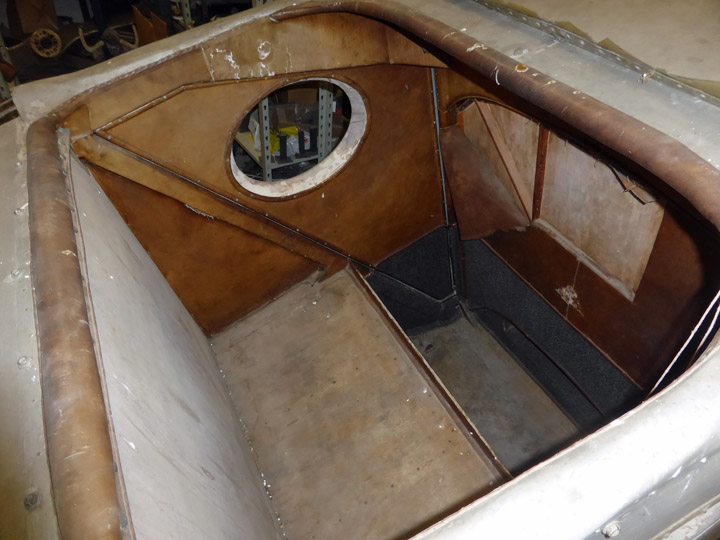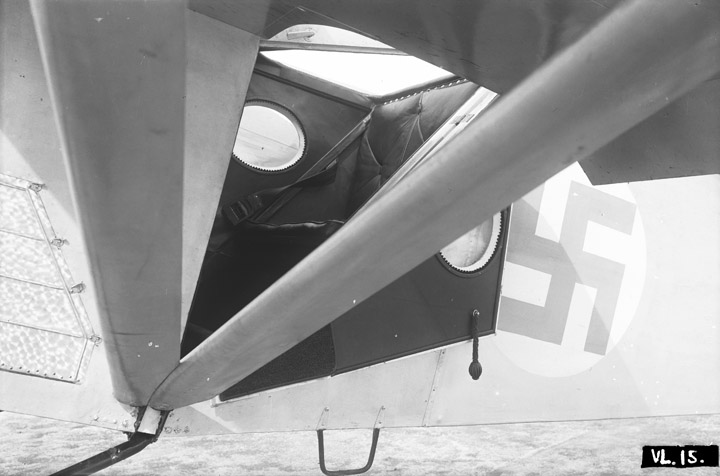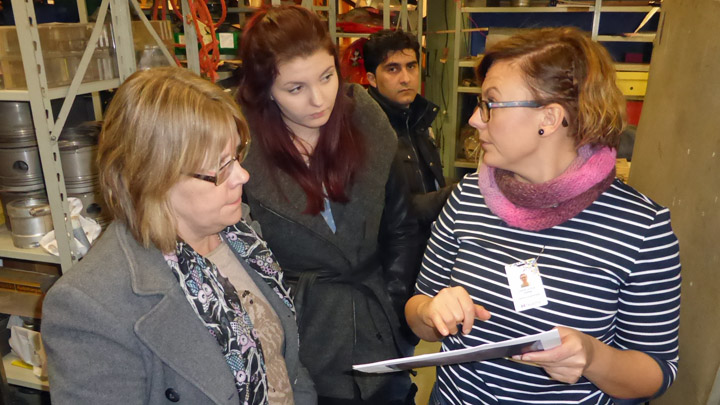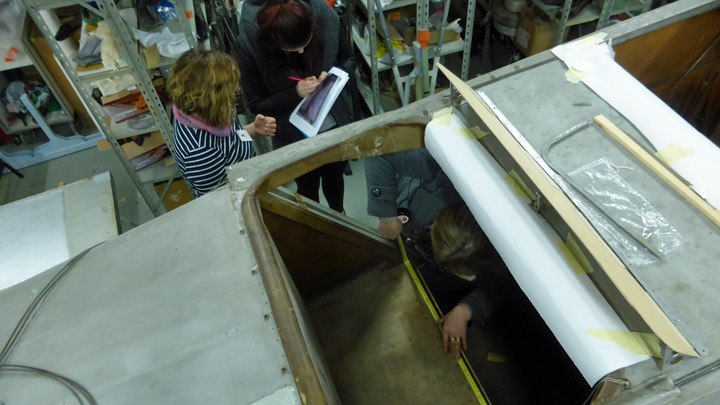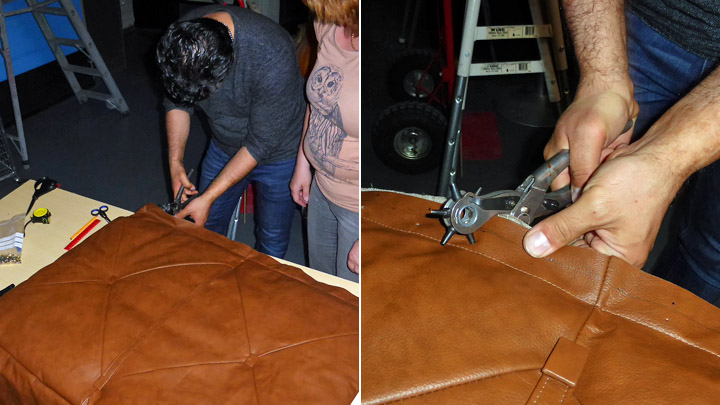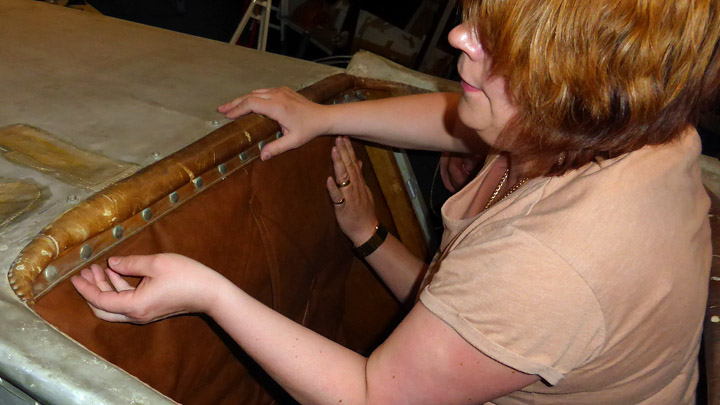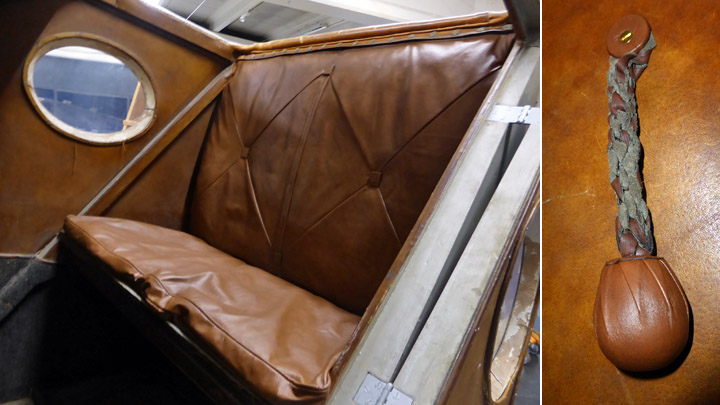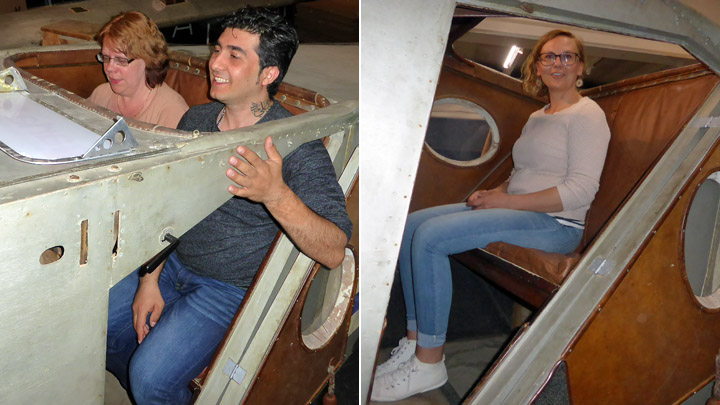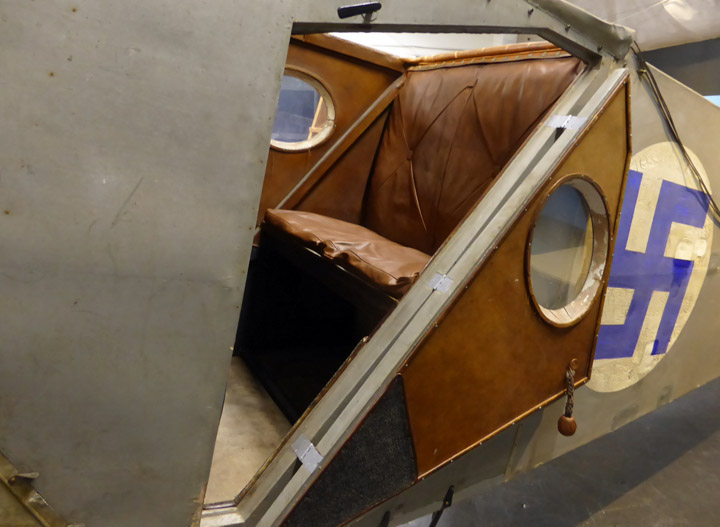Passenger compartment chair of Kurki got original-like upholsterySunnuntai 25.6.2017 - Member of Tuesday Club The I.V.L. K.1 Kurki has already been under restoration for about a year in the Tuesday Club. It’s almost luxurious passenger-cabin has stood the test of time remarkably well. The upper parts of the passenger-cabin walls are upholstered in leather, while the lower parts have a textile covering (with a wall-to-wall carpet like material). The passenger-seat resembles a soft leather arm-chair. Or more precisely, has resembled, as its padding has gone AWOL during the long storage. Also missing is the ribboning that once framed the cabin-windows
It seems that marketing reasons have been a driver when the Aviation Forces Aircraft Factory (since 1927 the State Aircraft Factory), operational on the Suomenlinna Islands in the 1920ies and -30ies, when designing the passenger-cabin. Originally the Kurki was designed with civilian use in mind, and later offered as a liaison-plane to the FAF. In the end it failed to convince neither civilian nor military customers and remained a single prototype. The already 90 years old original leather- and fabric wall-upholstery does not need any major conservation work. But the seat does need new padding. But what type of padding would be correct? Original drawings are not available so there we cannot find an answer. But luckily the photo-collection of the Finnish Aviation Museum has a photograph that helps us in the decision-making.
The photograph is of the Kurki with the door to the passenger-cabin open, giving a partial view of its interior. It shows enough of the seat-bottom and backrest to give us the confidence to proceed with the upholstering of the seat according to what shows in the picture. But who should do the work- though the Tuesday Club members master many a trade, upholstering is not one of them.
The solution to the challenge was found at the Tavastia Vocational College’s upholstery program. Since last spring, the fuselage and wings of the Valmet Tuuli III trainer, under restoration in the Tuesday Club, have been undergoing surface treatment and painting at Tavastia. Through our contacts at the college we got connected to its upholstery program, which joyfully accepted the challenge to let the students do this part of the project as a part of their studies. And so a number of Tavastia upholstery program students, led by their teacher Virve Juola came to the Finnish Aviation Museum to familiarize themselves with the Kurki and to do the necessary measurements of the passenger seat for the making of its new seat cushions.
In late spring Tavastia informed us that the cushions made by the students was ready for installation and that they were coming to the museum to install it. At the Tavastia Vocational College the cushions had been made using 1920 type materials and work-methods. The top-side of the cushions were made of leather and the bottom side of linen-fabric. The seams in the seat-back cushions had been made using crossing seams as in the original one and using leather-covered buttons at the cross-points. At the top-side of the cushion a leather border for fastening the seat-back cushion to the seatbacks leather-covered top using press-fasteners had been sewn, just as on the original cushion.
At Tavastia horse-hair had been chosen to fill the cushions. Horse-hair is an old, traditional cushioning material that can stand moisture well and it does not mildew. The horse-hair cushioning was put into purpose-made linen bags that were sawn into the seat- and backrest cushions.
The old photograph also showed a hanging braided leather handle fastened to the inside of the cabin door, intended to enable the passengers to pull the door close when seated in the cabin. This had also gone amiss. The photo also showed that the free end of the braided handle was larger than the main part thereof, most probably there was a wooden ball inside the braid at its end. The new braided leather handle was made at Tavastia, with a wooden ball in its free end.
On Tuesday, June 6. was the big Kurki-day, when the upholstery students of the Tavastia Vocational College together with their teacher arrived at the Finnish Aviation Museum to install the seat cushions and the door handle into the Kurki passenger compartment. They fit like a glove! A bit of a surprise was the perfect fit of the press-fasteners into the existing original receiving parts from 1927 – what a measure of standardisation.
When the seat-cushions and the door-handle had been installed, it was time to test-sit the cushions and take “cold-types” of the “new original” Kurki passenger-cabin.
Our sincerest thanks to the students of the Tavastia Vocational College’s upholstery program and their teacher Virve Juola for their excellent contribution to the restoration of the I.V.L K1. Kurki passenger cabin. Historical photo: The Finnish Aviation Museum. Other photos: Lassi Karivalo. |
|
Avainsanat: aviation history, restoring, old aircraft, I.V.L. K.1 Kurki |


